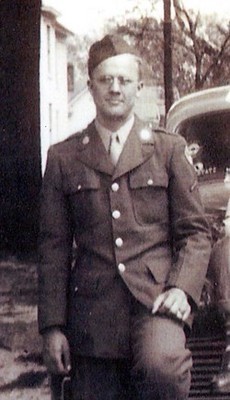Tech Sgt Charles G Ruble
The Defense POW/MIA Accounting Agency (DPAA) announced today U.S. Army Air Forces Tech. Sgt. Charles G. Ruble, 20, of Parker City, Indiana, killed during World War II, was accounted for May 31, 2019.
(This identification was initially published June 4, 2019.)
In September 1944, Ruble was a member of the 99th Troop Carrier Squadron, 441st Troop Carrier Group, serving as an aerial engineer aboard a C-47A aircraft, nicknamed the Celia L. On September 17, 1944, the Celia L, which operated out of U.S. Army Air Forces Station 490, Langar, Nottinghamshire, England, participated in Operation MARKET GARDEN, the Allied invasion of the German-occupied Netherlands. The aircraft was carrying a crew of five and transporting 10 paratroopers from the 508th Parachute Infantry Regiment to a drop-zone near Groesbeek, Netherlands. Anti-aircraft fire struck the plane’s wing and ignited its gas tanks. The paratroopers successfully exited the plane, as did two of the crewmembers. The pilot crash landed the plane several hundred yards inside the German border. Three crewmembers survived, but two, including Ruble, could not be accounted for and were believed to have been killed in the crash.
In April 1946, members of the 606th Quartermaster Graves Registration Company recovered eight sets of remains from isolated burials near Zyfflich, Germany, close to the Netherlands border. One set of remains, designated X-2565 Neuville, was buried about 500 yards from a downed C-47 aircraft in a grave marked with an uninscribed wooden cross. U.S. authorities interred X-2565 at what is today the Ardennes American Cemetery in Belgium after they had been declared unidentifiable.
After thorough research and analysis, historians from DPAA determined that Ruble was a strong candidate for association with X-2565. In June 2018, X-2565 was disinterred and the remains were sent to the DPAA laboratory at Offutt Air Force Base, Nebraska, for analysis.
To identify Ruble’s remains, scientists from DPAA used dental and anthropological analysis, as well as circumstantial and material evidence. Additionally, scientists from the Armed Forces Medical Examiner System used mitochondrial DNA (mtDNA) analysis.
(This identification was initially published June 4, 2019.)
In September 1944, Ruble was a member of the 99th Troop Carrier Squadron, 441st Troop Carrier Group, serving as an aerial engineer aboard a C-47A aircraft, nicknamed the Celia L. On September 17, 1944, the Celia L, which operated out of U.S. Army Air Forces Station 490, Langar, Nottinghamshire, England, participated in Operation MARKET GARDEN, the Allied invasion of the German-occupied Netherlands. The aircraft was carrying a crew of five and transporting 10 paratroopers from the 508th Parachute Infantry Regiment to a drop-zone near Groesbeek, Netherlands. Anti-aircraft fire struck the plane’s wing and ignited its gas tanks. The paratroopers successfully exited the plane, as did two of the crewmembers. The pilot crash landed the plane several hundred yards inside the German border. Three crewmembers survived, but two, including Ruble, could not be accounted for and were believed to have been killed in the crash.
In April 1946, members of the 606th Quartermaster Graves Registration Company recovered eight sets of remains from isolated burials near Zyfflich, Germany, close to the Netherlands border. One set of remains, designated X-2565 Neuville, was buried about 500 yards from a downed C-47 aircraft in a grave marked with an uninscribed wooden cross. U.S. authorities interred X-2565 at what is today the Ardennes American Cemetery in Belgium after they had been declared unidentifiable.
After thorough research and analysis, historians from DPAA determined that Ruble was a strong candidate for association with X-2565. In June 2018, X-2565 was disinterred and the remains were sent to the DPAA laboratory at Offutt Air Force Base, Nebraska, for analysis.
To identify Ruble’s remains, scientists from DPAA used dental and anthropological analysis, as well as circumstantial and material evidence. Additionally, scientists from the Armed Forces Medical Examiner System used mitochondrial DNA (mtDNA) analysis.
